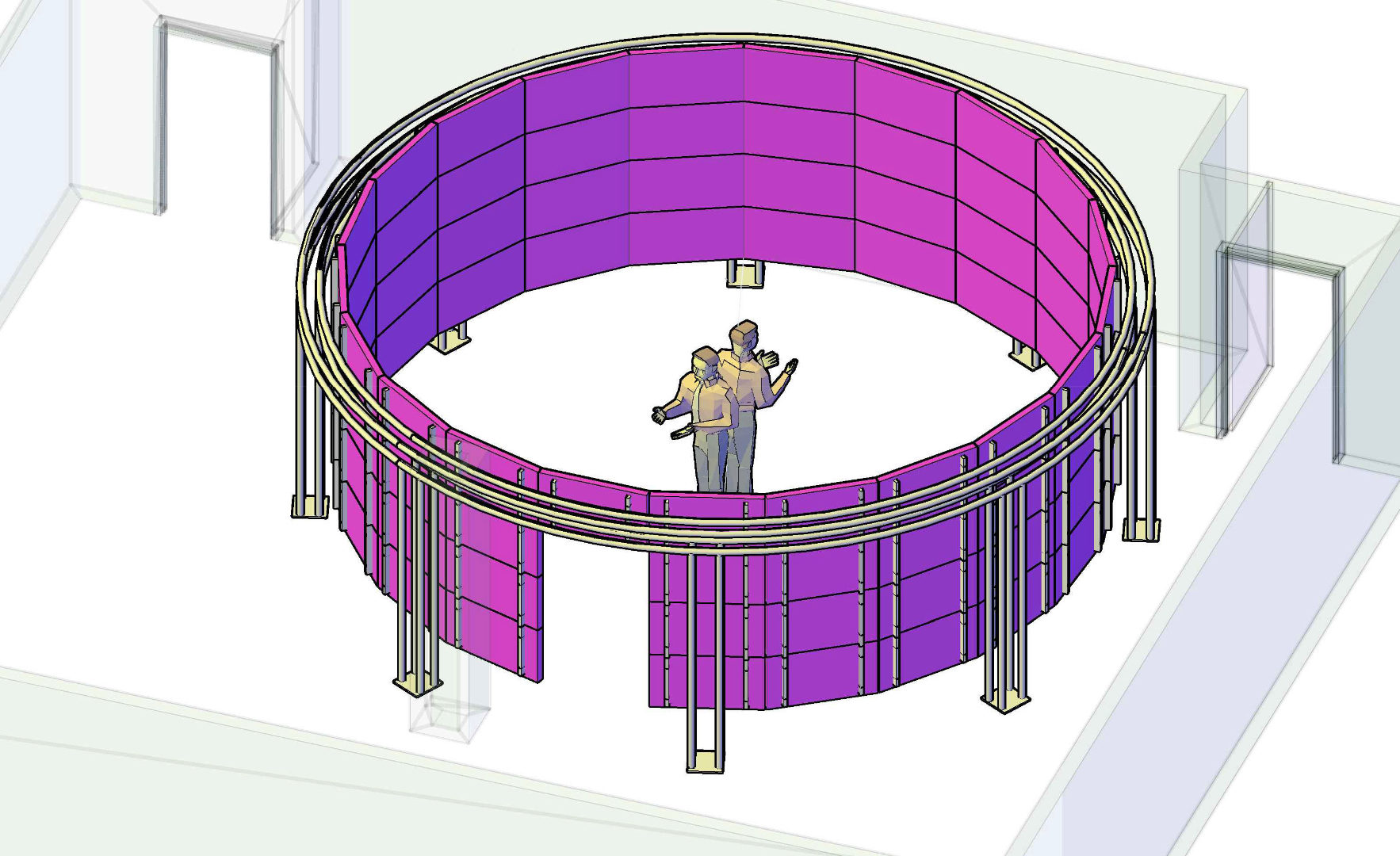The Walls of the Visualization Cave
February 6th, 2013

About
EDITOR’S NOTE: The University of Chicago’s Computation Institute (CI), on February 6, 2013, published the article “The Walls of the Visualization Cave,” extolling the value of visualization and the role of the UIC Electronic Visualization Laboratory (EVL) in understanding the “need for visualization long before Big Data became a buzzword.”
The article was an outcome of a presentation that EVL director Jason Leigh gave at the University of Chicago Medical Center on January 29th. Leigh’s presentation was the first Fred Dech Memorial Lecture, in honor of Dech, an employee at the University of Chicago Computation Institute and Department of Surgery and an EVL MFA graduate, who passed away in 2011.
Leigh’s talk focused on EVL’s efforts to enable scientific collaboration. Here are excerpts of the article:
[Leigh explains that in office environments] people like to spread their information out, which makes it easy to detect links between disparate data points and work with others on a common problem. The practice is similar to the concept of the “commons,” a shared, central space in a town or college campus where people come together to collaborate. The question, Leigh asked, is how can we replicate and amplify these commons with technology?
That thinking was the inspiration for LambdaVision, a giant video wall first developed by EVL in 2004. The 2009 version was constructed as a giant touch screen - “like an iPad on steroids,” Leigh said. But the EVL wasn’t content to stop at two dimensions, Leigh said. Instead, they merged the interactive features of LambdaVision with an older project called the CAVE, originally developed in the early 1990’s as a room-sized virtual reality environment that used projectors to immerse users in 360 degrees of graphics. Its progeny, CAVE2, instead uses a near-circle of 72 3D flat-screen panels and 4000 times the computing capacity to produce what Leigh called a “hybrid reality environment.”
As Professor of Surgery John Alverdy described the experience: “I was standing inside the Circle of Willis, a ring of blood vessels inside the brain. If you can be immersed in this environment, and it’s big enough… it completely allows you to contextualize the anatomy to what we do in the operating room.”
Despite all the high-powered gadgetry on display, it was reassuring that the EVL technologies were built on relatively simple human psychology - the urge to physically interact with one’s environment and to share the experience with others. Even as big data and advanced computation pushes us towards the future of science, the primitive skills of our visual system remain some of the most powerful tools we possess. “It’s using the power of your eyes to do something that computers aren’t very good at,” Leigh said.
Read the entire article
CAVE and CAVE2 are trademarks of the University of Illinois Board of Trustees.